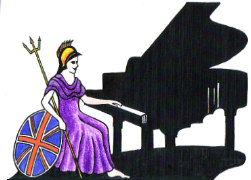Teachers, Accompanists and Piano Entertainers in the UK

UK Piano Page

7 Berkely Road
Dublin, County Dublin 7
Republic of Ireland
We have pianos for all standards. All pianos
14 Elm Row
City of Edinburgh, Edinburgh EH7 4AA
Scotland
We have been Established for 30 years and have a
15 Leckey Road
Ballinderry Upper
Lisburn, County Antrim BT28 2QA
Northern Ireland
A.A Music are a leading supplier of new/used
3a Red Brae Drumalig Road
Temple
Antrim, County Antrim Bt27 6UD
Northern Ireland
Specialising in top quality mint condition used
34 Wellhead Terrace
Ashington, Northumberland NE638PA
England
With a fine selection of only the best new pianos
Music Festival for performers and guests Our 10th
18-06-2022 12:30PM
The Morecambe Bay Piano Group was set up to extend
11-12-2021 01:00PM
The Morecambe Bay Piano Group was set up to extend
08-01-2022 01:00PM
The Morecambe Bay Piano Group was set up to extend
12-02-2022 01:00PM